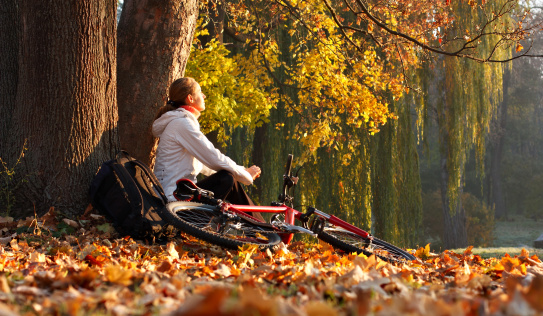Back to school is synonymous with the fall season for many, and for cybercriminals looking to capitalize on students, distracted shoppers, people away from home and the holiday season cusp, it is 'back to fraud.'
Autumn not only brings phishing and other related social engineering attacks geared toward the season, but it also extends to many trending fraud schemes and malware.
As cybercrime incidents climb, expect elevated levels of malicious emails and phishing heading into fall, experts warned.
“Right now the growing threats to many people are what has been extremely successful [for cybercriminals] this year, in particular ransomware and phone scammers,” Paul Kubler, digital forensics and cybersecurity examiner for the New York City-based cybersecurity firm LIFARS, said. “I see this increasing as consumers are continuing to fall victim to these threats in growing numbers.”
Experts pinpointed these trending threats:
Can your cybersecurity strategy handle an attack? Do you have the latest tools and techniques to prevent fraud and data breaches? Get them and more at our FREE Second Annual Data Breach Defense Virtual Conference on September 7. Plus, you'll also learn the latest trends in cybersecurity including incident responses and be able to immediately download white papers, and so much more. Register for FREE Now!
 1. Out of footprint activity
1. Out of footprint activity
Credit unions will start to see out of footprint activity because many college students head out of town for school.
“We like to encourage credit unions to encourage members to keep contact information updated so we know where people are, and where they are transacting and doing activity. It's very important to do that,” John Buzzard, strategic technical fraud account executive for the Rancho Cucamonga, Calif.-based CO-OP Financial Services, said.
The main goal of fraudsters is to mimic legitimate cardholder activity. Therefore, anytime members are away for an extended period of time, notifying issuers helps them detect potentially fraudulent transactions.
Criminals today regularly purchase card numbers based on zip codes and use them to create counterfeit cards within those same zip codes. When card issuers can't tell the difference between legitimate and fraudulent card activity, it creates a huge problem.
Buzzard also said credit unions have a great opportunity to educate their members about school relocation or extended travel notifications.
“It's a process where you notify your card issuer that you plan to be out of your normal area for a time so they could be aware of it for fraudulent activity,” he said.
 2. College student scams
2. College student scams
Students with new emails and a modest level of technology experience are prime targets for fraudsters as well. And their attacks might take on various forms.
Scammers may try to take advantage of the influx of new students by luring new laptop owners with fake Microsoft security emails and calls, or impersonating new schools to steal personally identifiable or sensitive personal information.
Credit card credential theft can also increase as students try to save money by buying books from alternative dealers and sites, Kubler warned. Outright textbook piracy may also come with free viruses and other malware.
Then there is tuition wire fraud, which attempts to coax money out of victims by convincing them they have an unpaid tuition bill.
3. Bogus email and phishing schemes
During back-to-school time, criminals are likely to instigate a common email fraud scheme that involves sending a message that promises a reward, such as a gift card from a major retailer. Criminals ask their victims to complete a survey, which includes the inputting of personal information such as home addresses, Social Security numbers and birthdays. Once the fraudsters have enough details, they use the survey applicant's data to apply for credit cards.
Another cybercriminal scheme is to obtain teachers' credit union email lists so they can hit members with spear phishing attacks, which ask members to update their information and then lures them to fake pages designed to capture usernames, passwords and personal credentials.
 4. POS/ATM fraud
4. POS/ATM fraud
Point-of-sale skimming devices could victimize back-to-school consumers. An increase in shopping, traveling and general card usage creates more fraud opportunities for crooks.
The retail, fast food, hospitality and retail sectors have already experienced POS system-related breach incidents in recent months.
For example, the pizza restaurant chain Cicis recently acknowledged a possible credit card breach at more than 135 locations, and Las Vegas' Hard Rock Hotel & Casino announced its second breach in about a year, which stemmed from card-scraping malware on its POS system. Malware also affected more than 1,000 Wendy's franchise restaurants' POS systems, and skimmers found at Walmart stores in Fredericksburg, Va., and Fort Wright, Ky., were placed over existing EMV-enabled POS devices and even included a slot for chip cards.
It has been a big year for ATM skimming as well, Buzzard pointed out.
“There have been some sources in the industry that estimate a 600% increase in the number of ATM skims where card numbers and PINs are captured,” he said.
The EMV shift has pushed that type of crime as criminals, in an attempt to beat the adoption rates, take advantage of the gradual U.S. conversion to chip technology.
“They have a two- to three-year window before there is a full conversion to chip technology,” he said.
 5. Fall travel hazards
5. Fall travel hazards
Even though the prime summer vacation season has passed, many people are still taking trips, such as fall foliage tours.
Typically, vacationers use a lot of plastic when they're away from home. This creates a perfect opportunity for fraudsters to perpetrate crimes like card skimming as travelers are distracted and not in their natural element.
Travelers must be extra vigilant about emails and links while on the road or when planning a trip. Fraudsters made $1.3 billion last year through online hotel scams. They should also watch out for emails promising a big discount and double check the company's website – if the deal seems too good to be true, it probably is.
Again, Buzzard recommended members notify their card issuers about extended travel.
 6. Elderly swindles
6. Elderly swindles
During all seasons, senior citizens frequently become victims of consumer scams because fraudsters consider them easy targets. These frauds often involve the soliciting of services such as home repairs, yard cleanups, health insurance, anti-aging products and travel.
The FBI's Common Fraud Schemes webpage indicates seniors are less likely to report fraud because they don't know who to report it to, are too ashamed about being scammed or don't know they have been scammed. Elderly victims also may not report crimes because they are concerned their relatives may think they no longer have the mental capacity to take care of their own financial affairs.
When elderly victims do report a crime, they often make poor witnesses. Con artists count on elderly victims not being able to supply enough detailed information to investigators. In addition, the victim's realization of a swindle may take weeks or even months after they've made contact with the fraudster. This makes it even more difficult for them to remember details about the events.
 7. Threats related to football, the World Series, Halloween and elections
7. Threats related to football, the World Series, Halloween and elections
Watch out for unsolicited emails and pop-up websites offering discounted tickets or other products and services. The popularity of fall sporting events gives cybercriminals the perfect opportunity to target online users.
Voters who search voraciously for news and information about candidates are also at risk. Cybercriminals often use spam, malvertising and spoofed websites to plant viruses and malware.
Exercise caution before clicking on a link, banner ad or attachment.
The end of October is also a prime time for the spread of malware as fraudsters initiate Halloween-themed cyber tricks. It also signals the beginning of the holiday season – which brings an influx of new threats for shoppers.
Can your cybersecurity strategy handle an attack? Do you have the latest tools and techniques to prevent fraud and data breaches? Get them and more at our FREE Second Annual Data Breach Defense Virtual Conference on September 7. Plus, you'll also learn the latest trends in cybersecurity including incident responses and be able to immediately download white papers, and so much more. Register for FREE Now!
© Touchpoint Markets, All Rights Reserved. Request academic re-use from www.copyright.com. All other uses, submit a request to [email protected]. For more inforrmation visit Asset & Logo Licensing.







